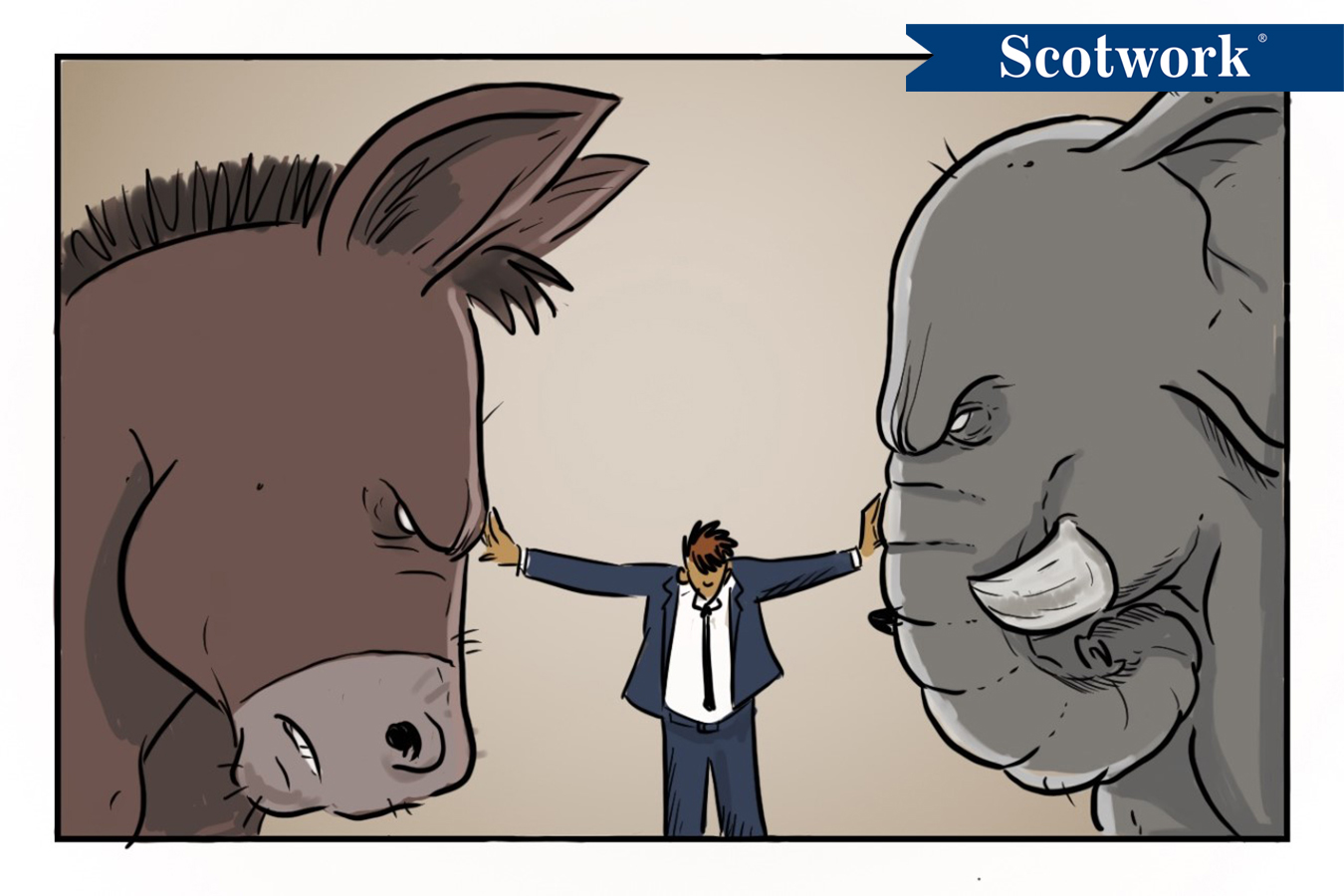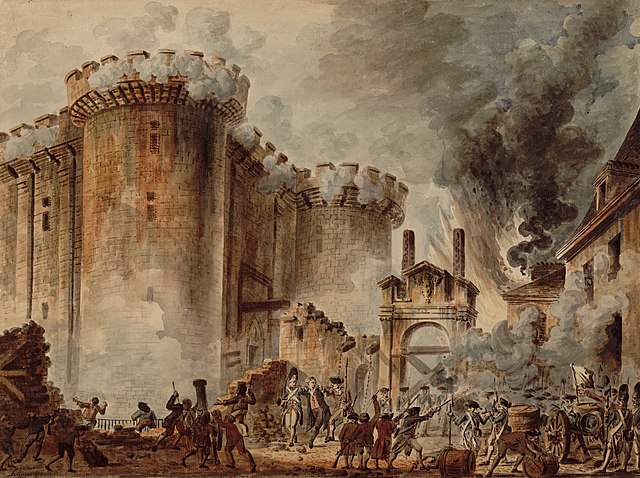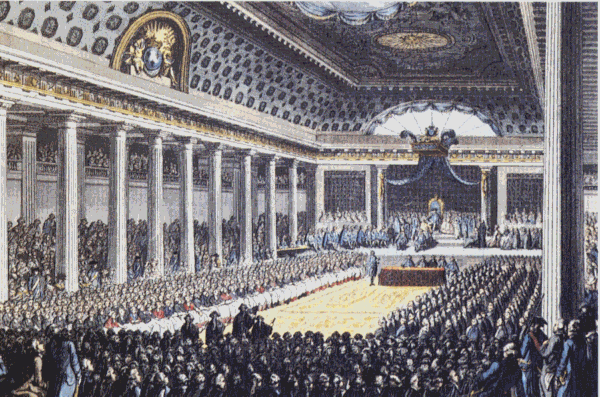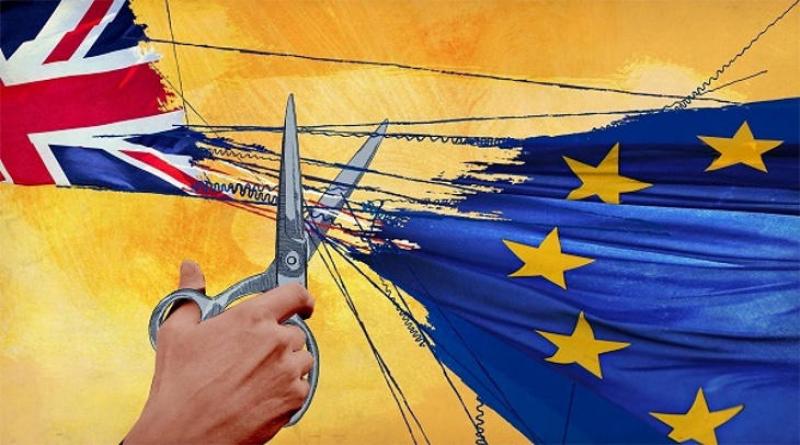Left and Right: How Politics Took Sides

Image Source: ScotWork USA
Politics is one of the most divisive topics in modern conversations. Many suggest avoiding political discussions altogether, especially in the workplace, as highlighted in articles like 4 Compelling Reasons To Never Talk Politics At Work and The perils and pitfalls of discussing politics with family and friends. Others argue that open dialogue is essential for democracy, emphasizing the importance of talking—even when we disagree. Research also shows that nearly half of Americans have stopped talking politics with someone, and both Democrats and Republicans report that talking about politics with people who disagree is stressful, underscoring how difficult these conversations can be.
So why am I writing about politics? For me, it all began with a friend who is deeply politically engaged. Our conversations were often dominated by his political opinions. I usually let him speak because I found these discussions to be learning opportunities. One day, however, he shared a strong take on an issue that I believed was far more nuanced, which led to a debate. I quickly realized that while I disagreed with him, I lacked sufficient knowledge to push back effectively. This prompted me to dive into political history—not just to challenge him but also to understand the roots of our disagreements.
Ironically, my quest to “prove him wrong” deepened my interest in politics, particularly in how political systems evolved into what they are today. I figured sharing some of this history would create an engaging blog post. And what better time to explore political history than during a U.S. Presidential election year?
Over time, my friend and I found that we agreed on more than we initially thought—our debates helped us reach that understanding. In our case, talking about politics brought us closer rather than dividing us further. But that’s besides the point. A larger question loomed in my mind: Why are political conversations so polarized? Why is there a divide between “left” and “right” in the first place? In this post, I’ll explore the origins and evolution of left and right-wing politics. My goal is to provide some historical context, allowing you, the reader, to understand better these ideologies and how they shape today’s political landscape.
It’s important to note that the ideologies and history discussed in this article are primarily relevant to Western countries. In other parts of the world, such as Nigeria, where I’m from, politics often takes on different shapes and forms that may not be represented here.
With that said, let’s delve into the history of left and right-wing politics.
It Started in France

Image Source: American Founding Observations of the French Revolution That Influenced the United States Constitution and Governing
Like champagne, the metric system, and cinema, the political terms “left-wing” and “right-wing” also originated in France—specifically during the French Revolution. In 1789, France, under the absolute rule of King Louis XVI, was on the verge of collapse. The country faced a massive national debt and a dire economic situation. Compounding the issue, the wealthiest members of society paid very little in taxes. As calls for political reform grew louder, the King convened the Estates General, a representative national body that had not met since 1614. The Estate-General consisted of 300 representatives from the First Estate (the clergy), 300 from the Second Estate (the nobility), and 600 from the Third Estate (the commoners).
When they gathered at Versailles, the nobility and clergy sat on the King’s right while the commoners sat on his left. The goal of the meeting was to draft a new constitution to address the mounting crisis.

Image Source: The left vs right battle: 1. the meaning of left and right
In the newly recognized National Assembly, the more revolutionary members who sought radical changes sat on the left side of the president. They advocated for the overthrow of the monarchy and the establishment of a republic. This group became known as the left wing. On the right side of the Assembly, supporters of the monarchy and the existing social order took their seats. They were more conservative, favoring moderate reforms and the preservation of religious and aristocratic traditions. This group became known as the right wing.
Thus, broadly speaking, the terms “left-wing” and “right-wing” came to represent two ideological groups: the right wing, which favors conservatism and the preservation of existing societal structures, and the left wing, which advocates for more radical changes and societal reform.
Going Around the World
After the French Revolution, the ideological divide between the left and right quickly spread beyond France’s borders. In the early 19th century, Europe was a hotbed of political and social change, and the concepts of “left-wing” and “right-wing” became essential tools for understanding the growing tensions. The Napoleonic Wars (1803–1815) accelerated this spread, as Napoleon’s expansionist campaigns brought revolutionary ideas, including concepts of citizenship and equal rights, to countries across Europe. As monarchies were restored after Napoleon’s defeat, the terms left and right solidified: the left symbolized the drive for republicanism, equality, and the dismantling of feudal systems, while the right represented the desire to return to the status quo, preserving monarchies, aristocratic privileges, and church power.
Mid-19th Century: The Rise of Social Movements
By the mid-19th century, industrialization had transformed Europe, creating a growing divide between the wealthy elites and the burgeoning working class. Left-wing ideas gained further traction during this period, especially with Karl Marx’s Communist Manifesto in 1848. Marx’s call for a classless society and the abolition of private property became a rallying cry for many labor movements, aligning with the left’s push for workers’ rights, social equality, and government intervention to address economic disparities. The revolutions of 1848, also known as the “Springtime of Nations,” saw uprisings across Europe as people demanded constitutional governance, freedom of speech, and economic reforms. Though most of these revolutions were unsuccessful, they left an indelible mark on European politics, cementing the left as the voice of the working class and reformers.
On the other side, the right wing became more deeply associated with the defense of property rights, monarchies, and the interests of the upper classes. Conservatives viewed the rapid social changes brought about by industrialization with suspicion, fearing that upheavals could lead to instability. In response to the revolutionary wave, conservative leaders like Austria’s Prince Metternich and later, Otto von Bismarck in Germany, sought to maintain political order by suppressing socialist movements while enacting limited reforms to appease the masses. Bismarck’s creation of a welfare state, for example, was designed to undermine support for socialist parties by addressing workers’ needs without fundamentally altering the capitalist system.
Late 19th Century: Left and Right Take on New Dimensions
In the late 19th century, the left-right divide continued to evolve, particularly as Europe expanded its global influence through colonization. The left, still championing the rights of the working class, began to incorporate ideas about national liberation and anti-imperialism. Many left-wing groups supported independence movements in colonies, seeing the struggles of colonized peoples as an extension of their fight against oppression. Conversely, the right became closely associated with nationalism and imperialism, advocating for expanding European empires to bolster national pride and economic power.
The formation of political parties based on these ideologies became a defining feature of late 19th-century politics. In the United Kingdom, for example, the Labour Party emerged as a voice for workers, aligning with the left’s push for social and economic reform. Around the same period, the Conservative Party solidified its position as the defender of traditional institutions, private property, and national interests.
Early 20th Century: The Ideological Clash Intensifies

Image Source: The Russian Revolution at 100
The early 20th century saw the left-right divide take on an even greater significance, especially in the wake of World War I. The Russian Revolution of 1917, which led to the establishment of the world’s first communist state, was a pivotal moment for the left-wing movement globally. The revolution inspired leftist movements around the world to pursue similar aims—namely, the overthrow of capitalist systems in favor of socialist or communist alternatives. Throughout Europe, left-wing parties gained popularity, particularly in countries suffering from economic hardship and political instability following the war.
Meanwhile, the right wing in Europe became more polarized. Traditional conservative parties continued defending capitalism and social hierarchies, but far-right movements emerged, rejecting socialism and liberal democracy. The rise of fascism in Italy under Mussolini and Nazism in Germany under Hitler represented the extreme right. These movements sought to establish authoritarian regimes based on ultranationalism, militarism, and the rejection of socialist principles. Mussolini and Hitler capitalized on widespread disillusionment with post-war democracy and economic instability, offering a radical alternative to the left’s vision of classless, egalitarian societies.
The 1930s, therefore, became a period of intense ideological conflict, with left-wing communism and socialism clashing with right-wing fascism and conservatism. The Spanish Civil War (1936–1939) was a microcosm of this broader global struggle, with left-wing republicans and anarchists fighting against the right-wing Nationalists, who were backed by fascist Italy and Nazi Germany. Ultimately, the Nationalists won, establishing a dictatorship under Francisco Franco, but the Spanish Civil War foreshadowed the more significant conflicts.
World War II and the Cold War
World War II (1939–1945) marked the peak of the ideological struggle between left and right. The war pitted the fascist right, led by Nazi Germany, Fascist Italy, and Imperial Japan, against the Allied powers, which included both right-leaning capitalist democracies like the United States and left-leaning communist states like the Soviet Union. Although the right-wing fascists were defeated, the ideological clash between capitalism and communism didn’t end with the war.
The Cold War (1947–1991) that followed World War II was dominated by the left-right ideological battle on a global scale. The left, led by the Soviet Union, sought to spread communism, advocating for state control of the economy, the abolition of private property, and a classless society. The right, led by the United States and its Western allies, championed capitalism, individual freedoms, and democratic governance. The Cold War saw proxy conflicts fought in countries like Korea, Vietnam, and Afghanistan, as the two ideologies vied for dominance.
During this period, the right wing in Western democracies, particularly in the United States and Western Europe, became strongly associated with free-market capitalism and opposition to communism. Conservative leaders, such as Margaret Thatcher in the UK and Ronald Reagan in the U.S., advocated for deregulation, lower taxes, and a reduction in the role of government in economic affairs. They portrayed their policies as a defense against the perceived threats of left-wing socialism and communism.
On the left, many socialist and social democratic parties in Europe distanced themselves from Soviet-style communism, instead advocating for a mixed economy where the state would provide social welfare programs, healthcare, and education while still maintaining capitalist markets. This form of “social democracy” took root in countries like Sweden, Norway, and Denmark, where strong welfare states and capitalist economies coexisted.
Post-Cold War: New Conflicts and Populism
After the Cold War, the collapse of the Soviet Union marked the triumph of capitalism and liberal democracy, but the ideological battle between left and right was far from over. In the 1990s, many left-leaning parties in Western countries shifted toward the center, adopting what became known as the “Third Way.” Leaders like Bill Clinton in the U.S. and Tony Blair in the UK embraced free-market economics while maintaining social safety nets, merging aspects of both left and right ideologies.
Meanwhile, neoliberalism—characterized by deregulation, free trade, and globalization—gained momentum, particularly among right-wing parties. However, this economic liberalization led to growing inequality, discontent among the working class, and an erosion of traditional industries. As a result, populist movements began to rise in both the left and right.

Image Source: Post-Brexit EU-UK
On the right, populist leaders capitalized on frustrations with globalization, immigration, and perceived political elites. Figures like Donald Trump in the U.S. and the Brexit movement in the UK emphasized nationalism, promising to protect national sovereignty and return jobs to domestic workers. Meanwhile, on the left, movements like Occupy Wall Street and figures such as Bernie Sanders pushed back against corporate power, income inequality, and the influence of the wealthy elite, arguing for more extensive government intervention in the economy. The rise of populism and increasing polarization has also redefined the political landscape. The right continues to advocate for economic deregulation and nationalism, while the left calls for expanded social programs and environmental protections.
Conclusion: The Modern Left, Right, and Beyond

Image Source: Reddit -> Very Details Political Compass
The terms “left” and “right,” born from the French Revolution, continue to shape the world today, but they no longer define the full complexity of political ideologies. While the left pushes for progressive reforms, as exemplified by Obama’s “Change,” and the right advocates for a return to tradition, as in Trump’s “Make America Great Again,” politics is far more nuanced. Centrism, libertarianism, social democracy, and environmentalism are just a few examples of the many ideologies people turn to in shaping their vision for society. Some experts argue that the traditional definitions of right and left make little sense in today’s landscape. This Hidden Forces podcast discussion with Henry Olsen a columnist that provides commentary on American politics is an excellent example of such discussion. Understanding these diverse ideas as we navigate modern politics can help us better grasp the complexity of today’s political landscape.
Finally, in the upcoming 2024 Presidential Elections, the right-wing candidate, Donald Trump, is running on a platform that emphasizes securing the U.S. border, deporting illegal immigrants, and boosting domestic manufacturing to make America more self-reliant. He focuses on lowering taxes, ending inflation, and positioning the U.S. as the world’s dominant energy producer. Trump advocates for strengthening the military, protecting Social Security without cuts, and combating what he refers to as “radical gender ideology” in schools. He also supports secure elections through measures like voter ID and paper ballots. Overall, his platform promotes strong national defense, economic independence, and a focus on traditional values and freedoms. You can read more about Trump’s platform here. On the other hand, the left-wing candidate, Kamala Harris, is running on the Democratic Party platform that revolves around building economic growth for working families, expanding access to affordable healthcare, and tackling the climate crisis through clean energy investments. It prioritizes social justice by defending reproductive rights, addressing racial and gender inequities, and protecting LGBTQ+ rights. The platform also calls for stronger gun safety laws, law enforcement reform, and greater access to education, including lowering student debt and expanding universal pre-K and affordable childcare. Ultimately, it seeks to promote equity, environmental sustainability, and comprehensive social reforms. You can read the DNC Platform for 2024 here.
Bonus: The Story Behind Red and Blue in U.S. Politics and the Origins of the Donkey and Elephant Symbols
Interestingly, the association of red and blue with U.S. political parties is a relatively recent development. Before the 2000 U.S. Presidential election, there was no consistent color scheme for Democrats and Republicans. In fact, throughout much of the 20th century, news outlets used varying color assignments, often reversing what we know today.
The 2000 election, a prolonged battle over the results between George W. Bush and Al Gore, solidified the red and blue divide. Major TV networks consistently used blue for Democrats and red for Republicans in their electoral maps, and the color scheme stuck. This is somewhat unusual compared to other countries, where red signifies left-wing or socialist parties, and blue is often associated with conservative movements. Nonetheless, in the U.S., blue has come to symbolize the Democratic Party and red the Republican Party—creating a lasting visual shorthand for America’s political divide. These videos provide some useful context into this history: Why red means Republican and blue means Democrat, America 101: Why Red for Republicans and Blue for Democrats? | History, and Why Red is Republican & Blue is Democrat: States & Party Colors | Democrat & Republican History.

Image Source: Why Democrats are donkeys and Republicans are elephants
As for the donkey and elephant, these iconic symbols have deeper historical roots. The donkey first became associated with the Democratic Party in the 1828 presidential campaign of Andrew Jackson, when his opponents called him a “jackass.” Instead of shying away from the insult, Jackson embraced the image, and it stuck. The elephant came to symbolize the Republican Party thanks to a political cartoon by Thomas Nast published in Harper’s Weekly in 1874. The cartoon depicted the Republican vote as an elephant, solidifying its association with the party over time. You can learn more in this video: Two Minute Explainer: Why are Republicans elephants and Democrats donkeys?.
References
While I have cited several sources in this blog post, below are some other resources that I used to write it and that can be useful for your further learning.
- The Political Spectrum Explained In 4 Minutes
- What to Know About the Origins of ‘Left’ and ‘Right’ in Politics, From the French Revolution to the 2020 Presidential Race
- Understanding the political spectrum
- Otto von Bismarck
- What’s the origin of the right and left terms in politics?
- Thomas Nast’s first Republican elephant print
- Political Spectrum Explained | What is the Political Spectrum? | Left Vs Right
- Political Spectrums Explained — Why is there a left-wing and right wing?
- What’s the deal with left and right in politics? | Politics Explained (Easily) | ABC News
- Every Political Ideology Explained in 8 Minutes
- Political Ideology: Crash Course Government and Politics #35
- The Political Spectrum
- How we know what Left and Right actually mean: who’s who, 1789-1917
- Where Did the Terms ‘Left Wing’ and ‘Right Wing’ Come From?
- The French Revolution: Crash Course World History #29
- Left Wing, Centre and Right Wing Explained | Conservatives, Labour & Liberal Democrats Summarised!
- The Three Estates
- A history (and defense) of left vs right
- 2024 Democratic Party Platform
- Can You Guess How Americans Feel About Harris’s Platform?
- The Napoleonic Wars - OverSimplified (Part 1)
- The Napoleonic Wars - OverSimplified (Part 2)
- The Global Reach of the Napoleonic Wars
- THE INDUSTRIAL REVOLUTION IN EUROPE
- Talking About Politics: LEFT WING & RIGHT WING